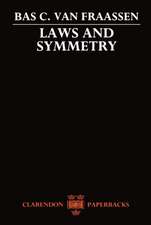Highlights of Astronomy: Part II As Presented at the XVIth General Assembly 1976: International Astronomical Union Highlights, cartea 4-2
Editat de E.A. Mülleren Limba Engleză Hardback – 31 aug 1977
| Toate formatele și edițiile | Preț | Express |
|---|---|---|
| Paperback (2) | 396.02 lei 6-8 săpt. | |
| SPRINGER NETHERLANDS – 30 sep 1977 | 396.02 lei 6-8 săpt. | |
| SPRINGER NETHERLANDS – 30 sep 1977 | 952.89 lei 6-8 săpt. | |
| Hardback (1) | 962.49 lei 6-8 săpt. | |
| SPRINGER NETHERLANDS – 31 aug 1977 | 962.49 lei 6-8 săpt. |
Preț: 962.49 lei
Preț vechi: 1173.77 lei
-18% Nou
Puncte Express: 1444
Preț estimativ în valută:
184.20€ • 190.28$ • 153.30£
184.20€ • 190.28$ • 153.30£
Carte tipărită la comandă
Livrare economică 26 martie-09 aprilie
Preluare comenzi: 021 569.72.76
Specificații
ISBN-13: 9789027708502
ISBN-10: 9027708509
Pagini: 416
Ilustrații: VII, 407 p.
Dimensiuni: 210 x 297 x 28 mm
Greutate: 0.93 kg
Ediția:1977
Editura: SPRINGER NETHERLANDS
Colecția Springer
Seria International Astronomical Union Highlights
Locul publicării:Dordrecht, Netherlands
ISBN-10: 9027708509
Pagini: 416
Ilustrații: VII, 407 p.
Dimensiuni: 210 x 297 x 28 mm
Greutate: 0.93 kg
Ediția:1977
Editura: SPRINGER NETHERLANDS
Colecția Springer
Seria International Astronomical Union Highlights
Locul publicării:Dordrecht, Netherlands
Public țintă
ResearchCuprins
1. Galactic Structure in the Direction of the Polar Caps.- Introductory Remarks.- One Galactic Structure at Lower z Distances — Space Densities and Motions — The Solar Neighbourhood — M Dwarfs — Missing Mass.- M Dwarfs at Lower z Distances.- Available Stellar Data in Galactic Polar Areas.- Bibliography on Galactic Structure in the Direction of Polar Caps.- M Dwarfs and the Missing Mass.- Some Research Programmes into Galactic Structure at the Galactic Caps Under Way at the Royal Greenwich Observatory.- The Space Density of M Dwarfs — An Observational Program.- The Luminosity Function of Late-Type Main-Sequence Stars in the Direction of the North Galactic Cap.- Galactic Mass Density in the Vicinity of the Sun.- The Frequency of Faint M Giant Stars at High Galactic Latitudes.- General Discussion of Topics in Part One.- Two Galactic Structure at Higher z Distances — Space Densities and Motions — Different Stellar Populations and Chemical Abundances.- The Stellar Distribution Above the Galactic Plane: An Introduction.- Some Results of Classification of Stars in Kapteyn Areas Applied to Galactic Structure in NGP.- Mean Chemical Abundance of the F Stars as a Function of Distance from the Galactic Plane.- RGU Three-Colour-Photometry Towards the NGP: Halo-to-Disk Mass Ratio.- Density Law, Vertical Distribution and Vertical Gradient of Metal Abundances for G and K Giants.- Polarization Measurements and Extinction Near the NGP.- Parallaxes of Selected Stars Near the NGP.- Progress Report on a Search for Parallax Stars in the Region of the South Galactic Cap.- Search for Large Radial Velocities in the Direction of NGP Using the Fehrenbach Techniques.- The Gravitational Field of the Galaxy in the z Direction.- Berkeley Studies of Faint Stars at High Latitudes.-Swedish Programmes Concerning the z Distribution of Stars.- Studies of A and F Stars in the Region of the NGP.- The Distribution of Field Horizontal-Branch Stars in the Galactic Halo.- A New Program to Determine K (z) from Main Sequence Stars.- Objective-Prism Radial Velocities at High Latitudes.- Discussion of the Calculation of the Density Law (Dz).- Motions of Near-Polar K-Giants Along the z Coordinate.- General Discussion of Topics in Part Two.- Three Summary and Conclusions — Present Results and Future Problems for Study.- The Role of Proper Motions in Determining the Luminosity and Density Functions.- Concluding Remarks Part Two.- Current Results and Suggestions for Future Work.- 5. Stellar Atmospheres as Indicator and Factor of Stellar Evolution.- Introduction-Observational Evidence.- Introductory Talk.- Observational Evidence for Atmospheric Physical Characteristics Relevant to Stellar Evolution.- Behaviour of Microturbulence with Evolution.- Observational Evidence for Atmospheric Chemical Composition Peculiarities Relevant to Stellar Evolution.- Stellar Atmospheres as Boundary Condition of Internal Structure.- Sensitivity of Internal Structure to the Surface Boundary Condition.- Boundary Conditions with Mass Loss: General Considerations.- Mass Loss in Stars of Moderate Mass by Stellar Winds and Effects on the Evolution.- Boundary Condition with Mass Loss: The Radiatively-Driven Wind Model.- Alteration of Surface Chemical Composition of Stars by Transport Phenomena.- Stratification of Elements in a Quiet Atmosphere: Diffusion Processes.- Competition Between Diffusion Processes and Hydrodynamical Instabilities in Stellar Envelopes.- Alteration of Surface Chemical Composition of Stars by Nuclear Reaction.- Mixing Between Burned Core Material and SurfaceLayers.- Decay of Light Elements in Stellar Envelopes.- Conclusion.- 6. The Small Scale Structure of Solar Magnetic Fields.- Observations of Small-Scale Photospheric Magnetic Fields.- Small Scale Solar Magnetic Fields: Theory.- Some Comments on the Measurement of Small Scale Strong Magnetic Fields on the Sun.- Line Profiles of Faculae and Pores.- Facular Models, the K-Line, and Magnetic Fields.- Small Magnetostatic Flux Tubes.- Flows in Magnetic Flux Tubes.- Discussion.- Concluding Remarks.- 7. The Impact of Ultraviolet Observations on Spectral Classification.- Present Status of Spectral Classification in the Conventional Wavelength Range with Emphasis Upon Early-Type Stars.- Spectral Classification of Early-Type Stars from the Low Dispersion Ultraviolet Spectra.- Spectral Classification of B and A Stars from the Line Features of S2/68 Spectra.- Behaviors of B Star Continua and Absorption Features Determined from the TDl S2/68 “Ultraviolet Bright Star Spectrophotometric Catalogue” and from Copernicus Spectra.- Discussion.- Spectral Classification Using ANS Photometric Data.- Spectral Classification with Objective-Prism Spectra from Skylab.- Discussion.- An Atlas of Ultraviolet Stellar Spectra.- A New Temperature Scale for B Stars Based on OAO-2 Data.- Extreme Ultraviolet Observations of White Dwarfs.- The Near Ultraviolet Spectrum of Fe III as a Classification Criterion.- A Catalogue of 0.2 Å Resolution Far-Ultraviolet Stellar Spectra Measured with Copernicus.- Spectral Classification from Copernicus Data.- The Ultraviolet Spectrum of ? Lyrae.- The Mg II Features Near 2800 Å and Spectral Classification.- Discussion.- Concluding Remarks.- Observational Evidence of the Heterogeneities of the Stellar Surfaces.- Heterogeneity of the Solar Atmosphere.- TheHeterogeneity of Surfaces of Magnetic Ap Stars.- Starspots on by DRA-Type Stars.- Starspots on AR Lac Type Stars.- Direct Observations of the Heterogeneity of Supergiant Disks.- On the Spottedness and Magnetic Field of T TAU-Type Stars.






























